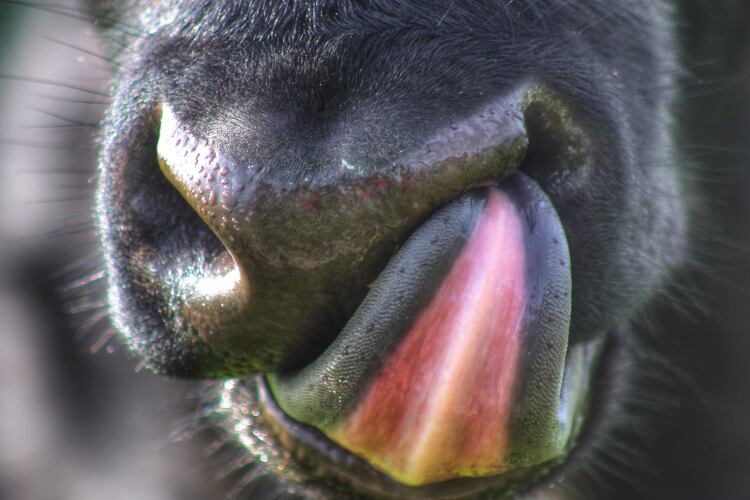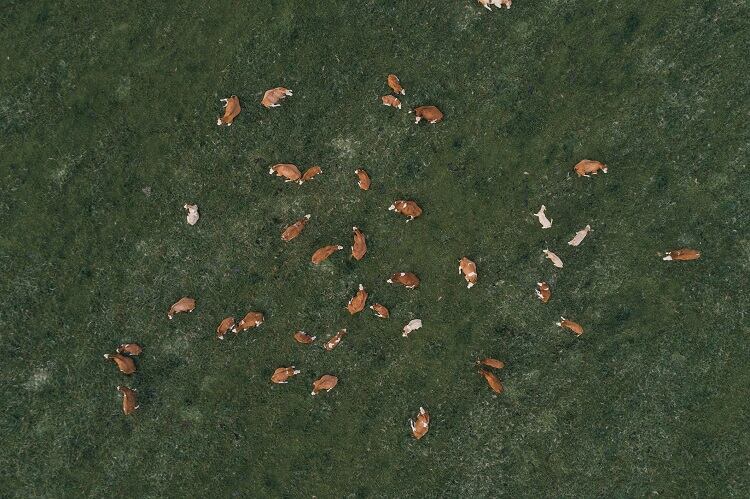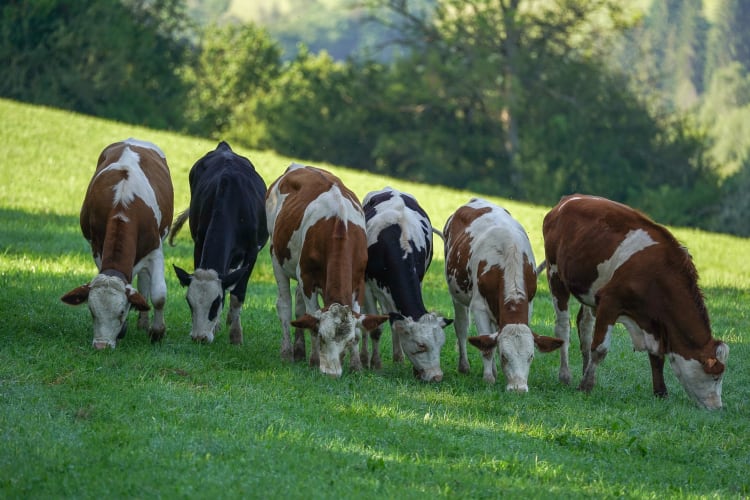Dairy faces a methane dilemma. The sector is coming under scrutiny over the methane emissions it produces and the contribution it makes to global warming.
Roughly 85-95% of dairy’s carbon footprint lies in primary production on dairy farms. Methane is generated when the farm processes and stores manure. But the lion’s share of emissions are linked to the cow’s rumen as it digests food. A cow burps roughly 450 grams of methane per day. Roughly 20 grams of methane is produced per kilo of milk, when the growth of a calf into an adult animal is taken into account.
Methane, like carbon dioxide, is a greenhouse gas, with a shorter life in the atmosphere, roughly ten years, but with an impact that is 28 times higher. In the atmosphere, methane dissolves into carbon dioxide in 10–12 years.
The methane produced by ruminants is 'circulating carbon'. Unlike the methane in fossil fuels, which are produced by releasing carbon that has been stored in the earth’s crust, the formation of circulating carbon begins with carbon that’s already in the atmosphere.
“Grass plants bind atmospheric carbon dioxide, cows eat the grass, use it as energy and transform it into milk, releasing methane, which is transformed into carbon dioxide, back into the atmosphere,” explained Natural Resources Institute Finland’s Senior Advisor Professor Pekka Huhtanen.
“If the number of dairy cows does not change, the amount of methane in the atmosphere will find a balance, in which cows produce an amount of methane that will naturally dissolve and not create an additional warming effect,” Huhtanen – who has just co-authored a paper on the topic – noted.
So what’s the problem?
First off, the global herd size isn't staying the same. According to the Food and Agriculture Organization (FAO) of the United Nations, the dairy sector’s GHG emissions increased by 18% between 2005 and 2015 because overall milk production grew by 30% in response to increased consumer demand.
“The trends in absolute emissions reflect changes in animal numbers as well as changes in the production efficiency within the sector. Between 2005 and 2015, the global dairy herd increased 11%. At the same time, average global milk yield increased by 15%,” FAO revealed.
Within the EU, a recent report argued it will be 'very difficult, if not impossible’ for the EU to achieve the Global Methane Pledge to cut methane emissions by at least 30% by 2030 without more action from the livestock sector.
The ‘High Steaks’ report – conducted by CE Delft on behalf of Changing Markets Foundation – found that under a business-as-usual scenario, emissions from livestock are set to fall by just 3.7% by the end of the decade. When agriculture is responsible for 53% to region’s total methane output, without a significant change in trajectory the progress made by the bloc looks set to fall well short of its ambitions.
The dairy sector in Finland, however, has bucked this trend. According to new research looking at the country’s dairy sector, between 1960 and 2020 methane emissions linked to milk production in Finland have declined by 57% in total and 35% per litre of milk.
“The methane currently in the atmosphere produced by Finnish dairy cattle is roughly half of what methane they did at their peak in the 1960s,” Huhtanen explained.
How has this been achieved? Firstly – unlike the global trends flagged by the FAO - smaller herd sizes have played a role, the researchers noted.
But other changes that have been implemented on-farm are also contributing. These include improved production capabilities, animal welfare and higher-quality feeding.
“Compared to the 1960s, cows today can produce more milk with the same amount of feed. The volume of methane per kilo of feed has fallen, as the micro-synthesis in the cows’ rumens has improved, and the type of fermentation has changed. Total milk production volumes were at their peak in 1965, with 3,650 million kilos produced, which resulted in 110 million kilos of methane. In 2020, the numbers fell to 2,300 million kilos of milk and 48 million kilos of methane,” Huhtanen elaborated.
Achieving a further 30-40% reduction in 15 years
The research was also written by Juha Nousiainen who heads up the climate programme at Finnish dairy processor Valio.
The dairy cooperative has set a goal to cut milk’s carbon footprint to zero by 2035 and the researchers pointed to a number of initiatives that can be taken on-farm to reduce emissions as Valio's farmer-owners work towards the net zero target.
Changes in feeding can reduce the creation of methane in a cow’s digestive system, the paper noted. For example, using plant oils and oats can result in a 5-10% reduction.
“Feed additives such as the one containing 3-Nitrooxypropanol that has being piloted on Valio farms can reduce methane emissions by up to 25–30% from current levels,” Nousiainen elaborated.
“In the long term, reductions can be achieved by enhancing feed use through animal breeding and by increasing a cow’s lifetime production. These actions would also reduce emissions other than methane and improve the production economy.
“Using manure as a material for biogas would reduce methane emissions by another 5%,” he added.
In terms of effective land-use, Nousiainen also stressed that cattle herds produce nutritionally important foods on Nordic fields, which grow grass well but cannot always support a good, high-quality harvest of other food plants for humans. “Roughly half Finland’s fields are like this, and therefore grass-based food production also makes sense from a security of supply perspective.”
More than 70% of Valio farms graze their cattle, and about 80% of the farms have either pasturage or exercise yards. Valio’s intention is that grazing and outdoor activity are significantly increased in the future. This represents a win-win for animal welfare and the environment, with well-managed pasture helping to support biodiversity and provide wildlife corridors, the company maintains.
Building on the progress to date, Valio said the Finnish dairy sector remains committed to further driving down its emissions footprint, with milk production currently accounting for 3-4% of the country’s GHG output. Methane expelled by cows made up 2.5% on Finland’s total greenhouse gas emissions in 2020.
“We must strive to reduce methane emissions from all sources,” stressed Nousiainen.
Source
‘Methane production inventory between 1960-2020 in the Finnish Dairy sector and the future mitigation scenarios’
Livestock Science
DOI: https://doi.org/10.23986/afsci.113752
Authors: Pekka Huhtanen, Aleksi Astaptsev & Juha Nousiainen.




